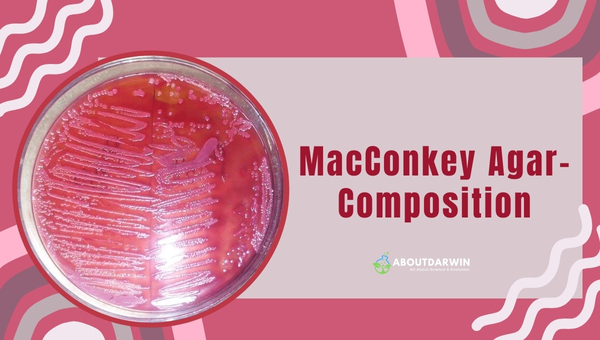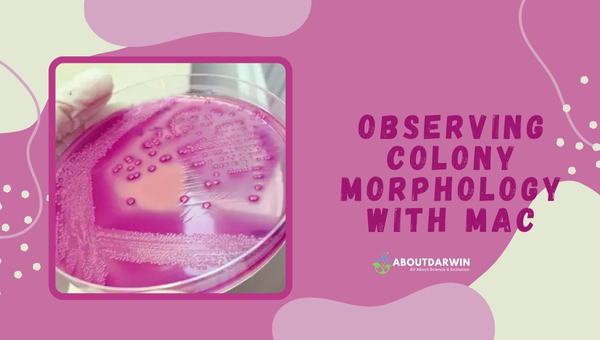Physical Address
304 North Cardinal St.
Dorchester Center, MA 02124
Welcome aboard as we explore the intriguing world of microbiology! In this informative article, we delve into everything about the MacConkey Agar, including its composition, the principles behind its operation, and its various uses. It’s a must-read resource for anyone in pursuit of comprehensive knowledge on this vital growth medium.
MacConkey Agar (MAC) is a selective and differential culture medium designed for the isolation and differentiation of Gram-negative bacteria based on their ability to ferment lactose. It is made up of peptones, lactose, bile salts, a neutral red pH indicator, and crystal violet.
Contents
MacConkey Agar (MAC), named after bacteriologist Alfred Theodore MacConkey, is a popular type of differential medium used in microbiology. Why is it important? Let’s put it this way – MAC plays a crucial role in distinguishing certain types of bacteria from others.

It fosters growth, promoting and inhibiting certain microorganisms concurrently, hence its significance across various fields, from medical research to industry applications.
Key points include:
The composition? It includes a cocktail having bile salts and crystal violet as key ingredients restricting the growth of Gram-positive organisms while permitting development for Gram-negative ones.
Then there’s lactose, allowing differentiation between lactose fermenters (forming red/pink colonies) & non-lactose fermenters (forming colorless colonies). The incorporation of neutral red dye as a pH indicator distinguishes these colonies based on acid production from lactose fermentation.
Scientifically speaking, here’s what MAC generally consists of:
Also Read: Planning a Perfect Family Reunion: A Comprehensive Guide
MacConkey agar plays a critical role in various environments, including but not limited to scientific labs and medical facilities.
It’s used primarily to distinguish between different types of bacteria based on their ability to ferment lactose, thereby aiding in their identification and processing.
In microbiology laboratories, MacConkey agar is an indispensable tool for multiple purposes:
In addition to clinical laboratories, MacConkey Agar has significant usage within medicine as well:
Taking into account its invaluable functionalities across labs and hospitals alike – from crucially simplifying complex identification tasks to assisting treatment decisions – it’s obvious why this tool holds such high importance.
Functioning simultaneously as a selective agent with differential capabilities makes MacConkey agar a cornerstone of microbial studies and therapeutics.
Also Read: Planning a Perfect Family Reunion: A Comprehensive Guide
MacConkey Agar (MAC) is one of the most vital components in scientific lab work, specifically in microbiology. Understanding its correct preparation can make a significant difference in research and analyses of bacterial cultures. The preparation process involves specific supplies and follows a particular set of steps.
Before starting the procedure, ensure you have all the necessary supplies. This includes safety equipment to protect against any potential hazards during the process.
Here’s what you will need:
Also, safety equipment should not be overlooked:
Remember that maintaining sterile conditions is crucial when preparing MacConkey agar to avoid unwanted contamination.
Once all requirements are met, we can delve into the exact step-by-step procedure for preparing MacConkey Agar:
*Note: While pouring, make sure that an even layer is formed over the entire surface area without forming any air bubbles.
Also Read: Unlock DNA Discoveries: Free DNA Upload Websites Guide
Observing the colony morphology on a MacConkey Agar (MAC) plate is an important aspect of bacterial identification.

This examination looks at size, shape, color, and other characteristics that can help determine the bacterial type.
When observing colonies on a MacConkey Agar, several key characteristics aid in identification. One of the main criteria used to differentiate colonies is whether they are lactose fermenters or non-fermenters.
Lactose Fermenters: Bacteria capable of fermenting lactose will produce pink to red colonies as acidic by-products cause a pH change that triggers neutral red (a pH indicator in the medium), resulting in a pink-red color.
Non-lactose Fermenters: These bacteria either do not ferment lactose or do so weakly. They form colonies that are translucent, whitish, or even take on the color of media without any change (usually pale).
| Bacteria Type | Characteristics |
|---|---|
| Lactose Fermenters | – Pink to Red Colonies |
| – Produce acidic by-products | |
| – Cause pH change triggering Neutral Red | |
| Non-Lactose Fermenters | -Translucent |
| -Whitish | |
| -Pale |
Also Read: Unlock DNA Discoveries: Free DNA Upload Websites Guide
No, it primarily differentiates between Gram-negative bacterial species based on their ability to ferment lactose.
Yes, as long as they are not allergic to any components of the agar and follow standard safety protocols.
Yes, alternative selective media such as Eosin Methylene Blue (EMB) can be used depending on microbial characteristics.
Improper sterilization, using expired materials, or incorrect storage can all affect the results.
The main criterion is the ability to ferment lactose, leading to color changes in the colonies.
Also Read: Unlock Your Roots: Explore Free Genealogy Websites Today
In conclusion, MacConkey Agar plays a central role in microbiology, supporting the identification and differentiation of Gram-negative bacteria based on lactose fermentation abilities. It’s a crucial tool in both laboratory and medical settings, used widely for diagnostic and research purposes.
Moreover, understanding the principles and mechanisms behind MAC is vital for accurate interpretation and outcomes. This medium not only enriches our knowledge about bacterial behavior but also impacts decisive actions concerning public health management and disease control.